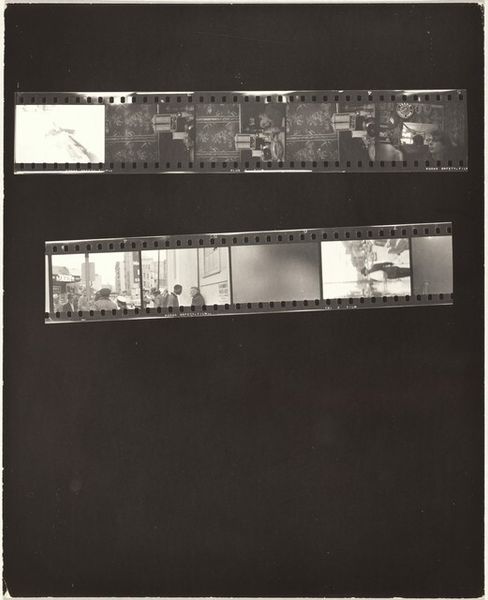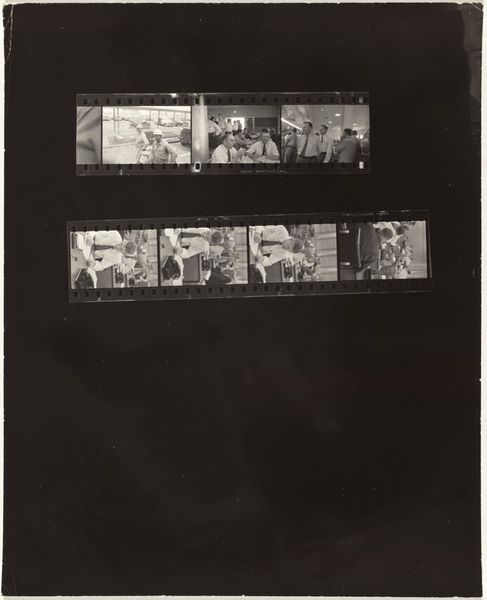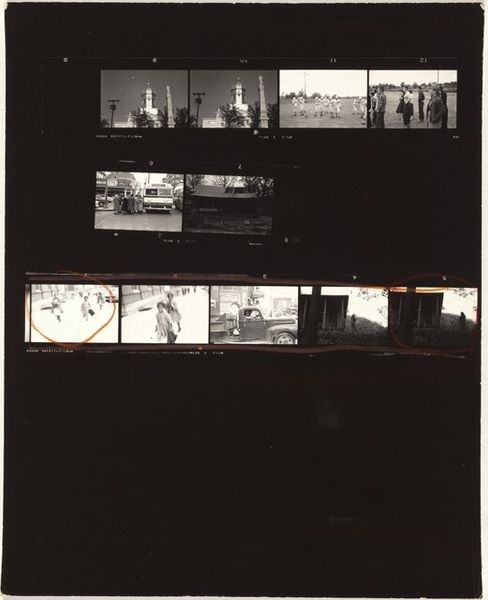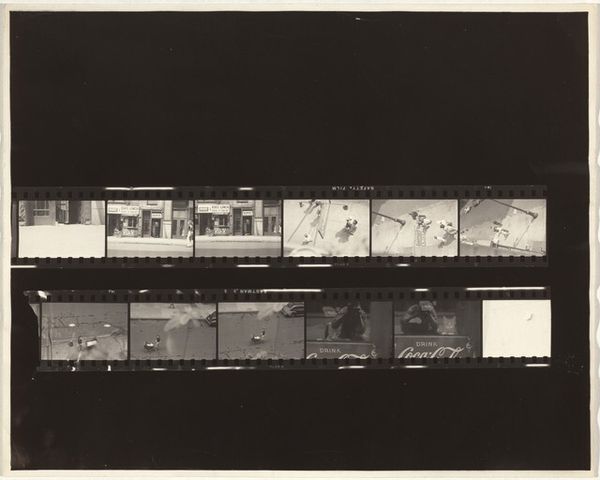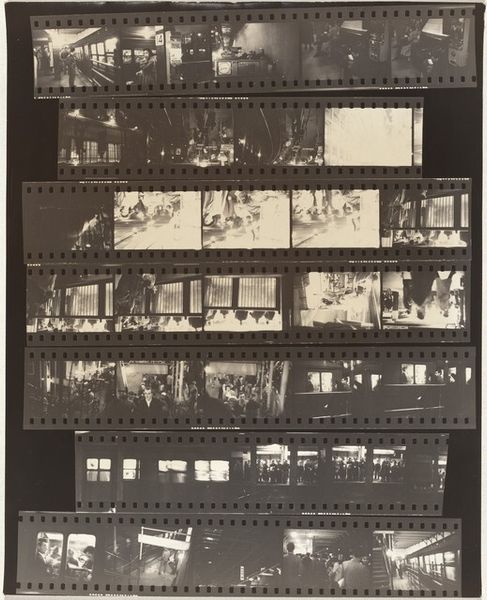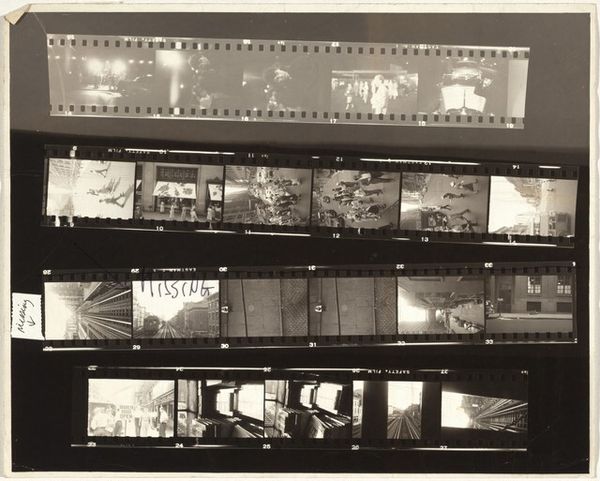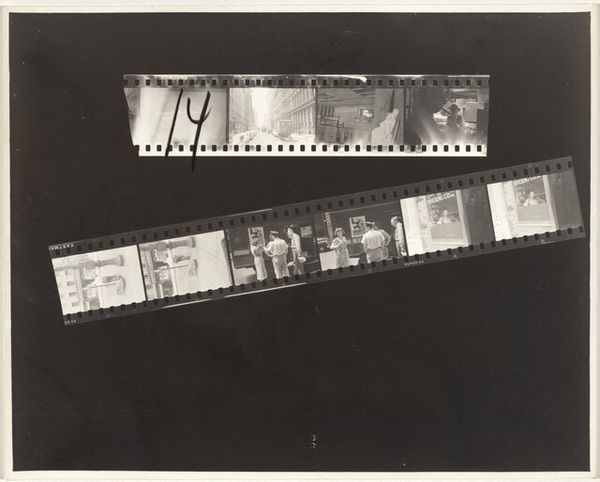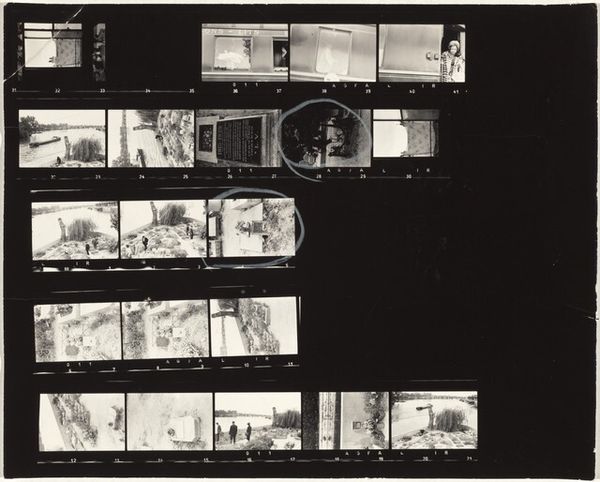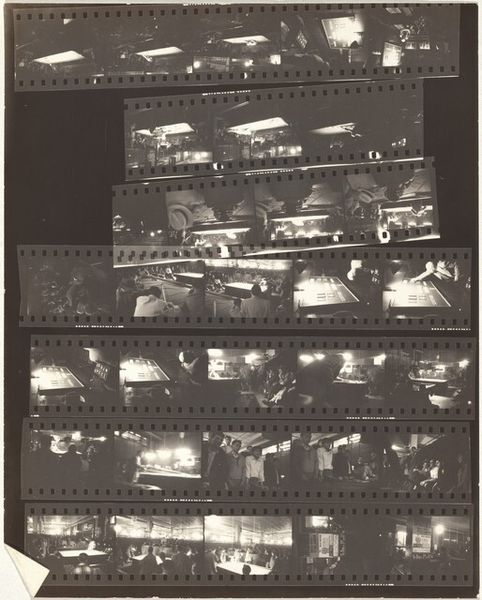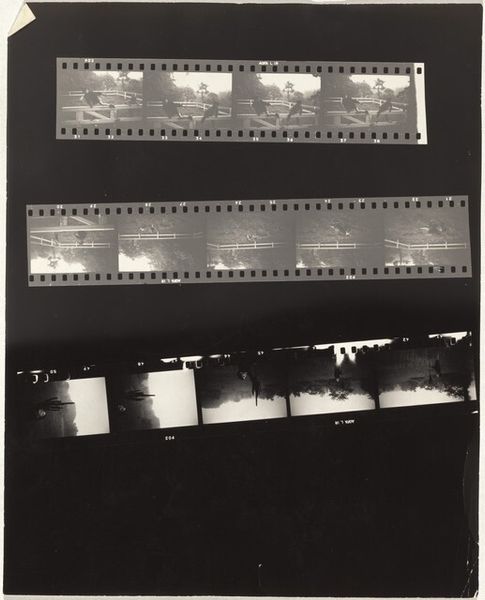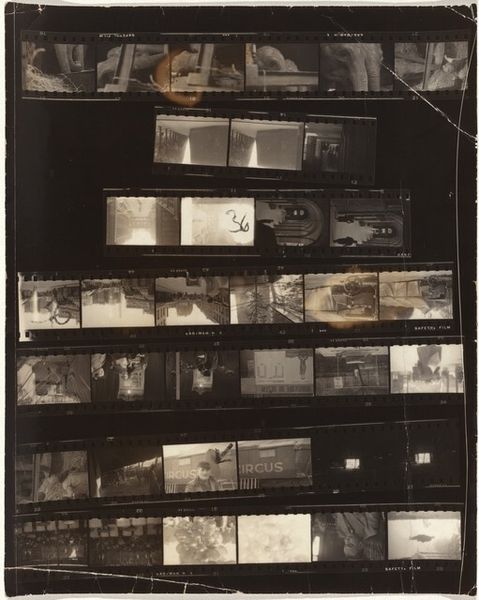
photography, gelatin-silver-print
#
film photography
#
landscape
#
street-photography
#
photography
#
gelatin-silver-print
#
pop-art
#
cityscape
#
modernism
Dimensions: overall: 25.4 x 20.5 cm (10 x 8 1/16 in.)
Copyright: National Gallery of Art: CC0 1.0
Curator: Robert Frank's "Guggenheim 321/Americans 71--Chattanooga, Tennessee," created in 1955, presents a strip of film. It’s a gelatin silver print, showcasing various scenes captured in the mid-20th century. Editor: It has a kind of detached quality, doesn't it? As if we are peering into moments rather than truly experiencing them. Curator: Frank, who received a Guggenheim Fellowship, embarked on a cross-country journey, resulting in "The Americans." This image offers us a glimpse into his creative process, showing the rawness and unedited nature of the photographic reel. We observe images portraying daily life in Chattanooga, Tennessee, presented in the sequence and format as seen in the artist’s camera. Editor: Right. The inclusion of the film strip as the image challenges our consumption of art and perhaps media generally, underlining how photographs, meant to document reality, are of course manufactured. The people pictured in the shots appear distanced and almost impersonal, don't they? It hints at social commentary, particularly themes of isolation, a sentiment perhaps pervasive in 1950s America. Curator: Frank aimed to capture the stark realities of American life, moving away from the idealized portrayals common in mainstream media. "The Americans," the resulting book, was criticized at the time. But, with hindsight, it's considered an honest depiction of American society during that era, addressing issues of race, class, and consumerism. Editor: Looking at the frame selection, it feels deliberate, each snapshot a piece of a bigger story, while also existing independently. You can really see the modernist and pop art influences there in the everyday subject matter but unconventional presentation, giving ordinary Americans an elevated status. The film as object, as much as the photograph is subject. Curator: Exactly. By displaying the film strip, Frank invites viewers to engage with photography as a medium and its role in shaping perceptions. Editor: It's not just a pretty picture; it’s a provocation. And that’s what makes Frank's work so enduringly relevant. Thanks for putting that in perspective. Curator: My pleasure, I think reflecting on the conditions of image production is particularly necessary these days.
Comments
No comments
Be the first to comment and join the conversation on the ultimate creative platform.
